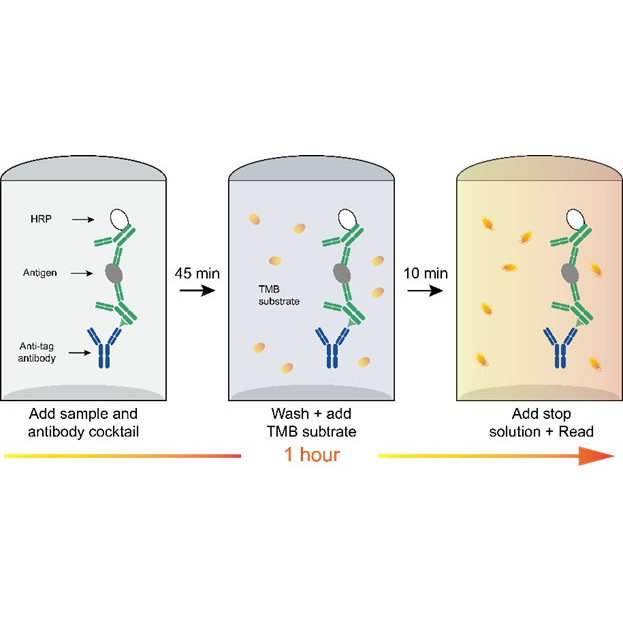Standard curve
Example of Human NFL standard curve in Assay Diluent #11R.
Product Details
Product Details
Product Specification
| Antigen | NFL |
| Immunogen | Recombinant Protein |
| Antibody Type | Recombinant mAb |
| Reactivity | Hu, Ms, Rt |
| Purification | Protein A |
| Stability & Storage | 2 to 8 °C as supplied. |
Kit
| Precision | Intra-assay: 3.6%; Inter-assay: 6.8% |
| Sample type | Cell culture supernatant, Serum, Cell/Tissue Lysate |
| Assay type | Sandwich (quantitative) |
| Sensitivity | 6.064 pg/ml |
| Range | 6.25 pg/mL – 400 pg/mL |
| Recovery | Cell culture supernatant: 110% Serum: 101% Plasma: 94% |
| Assay time | 60 minutes |
| Species reactivity | Human、Mouse、Rat |
Background
The Neurofilament Light Chain (NfL), a ~68 kDa protein encoded by the NEFL gene, is a critical structural component of the neuronal cytoskeleton, predominantly expressed in large myelinated axons of the central and peripheral nervous systems. As part of the neurofilament family (including NfM and NfH chains), NfL forms heteropolymers that stabilize axonal structure, regulate axon diameter to modulate nerve conduction velocity, and facilitate intracellular transport by acting as a scaffold for organelles and signaling molecules. Its release into biofluids (e.g., cerebrospinal fluid and blood) following neuronal injury or degeneration has established NfL as a highly sensitive, disease-agnostic biomarker of neuroaxonal damage. Elevated NfL levels correlate with diverse neurological conditions, including neurodegenerative diseases (Alzheimer’s, Parkinson’s, ALS), neuroinflammatory disorders (multiple sclerosis, neuromyelitis optica), stroke, and traumatic brain injury. Notably, NfL rises before clinical symptoms emerge, enabling early detection, while baseline concentrations predict disease progression and outcomes. Reductions in NfL levels are increasingly used to monitor therapeutic efficacy in clinical trials, such as antisense oligonucleotide therapies for ALS. Ultrasensitive assays like Simoa allow noninvasive blood-based quantification, enhancing its utility for longitudinal monitoring. With high sensitivity, accessibility, and broad applicability, NfL has become pivotal in advancing diagnostics, prognostics, and personalized treatment strategies for neurological disorders.
Picture
Picture
ELISA
Linearity
The concentrations of NFL were measured and interpolated from the target standard curves and corrected for sample dilution.
Sample is undiluted samples are as follows: Mouse brain Lysate was 200fold dilution. The interpolated dilution factor corrected values are plotted. The mean target concentration was determined to be 29.12 ng/mL in stimulated Mouse brain Lysate.
Linearity
The concentrations of NFL were measured and interpolated from the target standard curves and corrected for sample dilution.
Sample is undiluted samples are as follows: Rat brain Lysate was 200fold dilution. The interpolated dilution factor corrected values are plotted. The mean target concentration was determined to be 28.85 ng/mL in stimulated Rat brain Lysate.
Protocol Diagram


